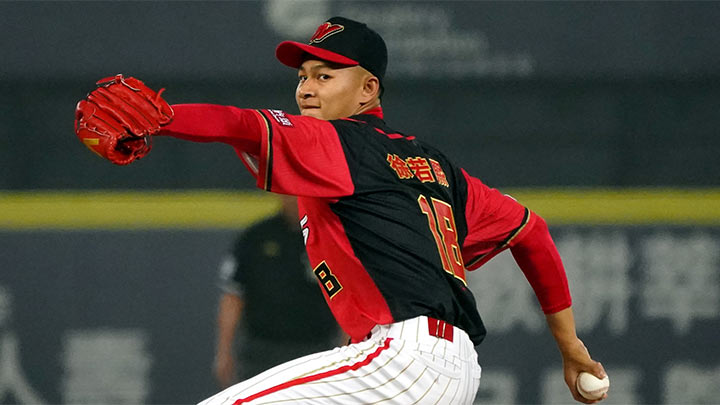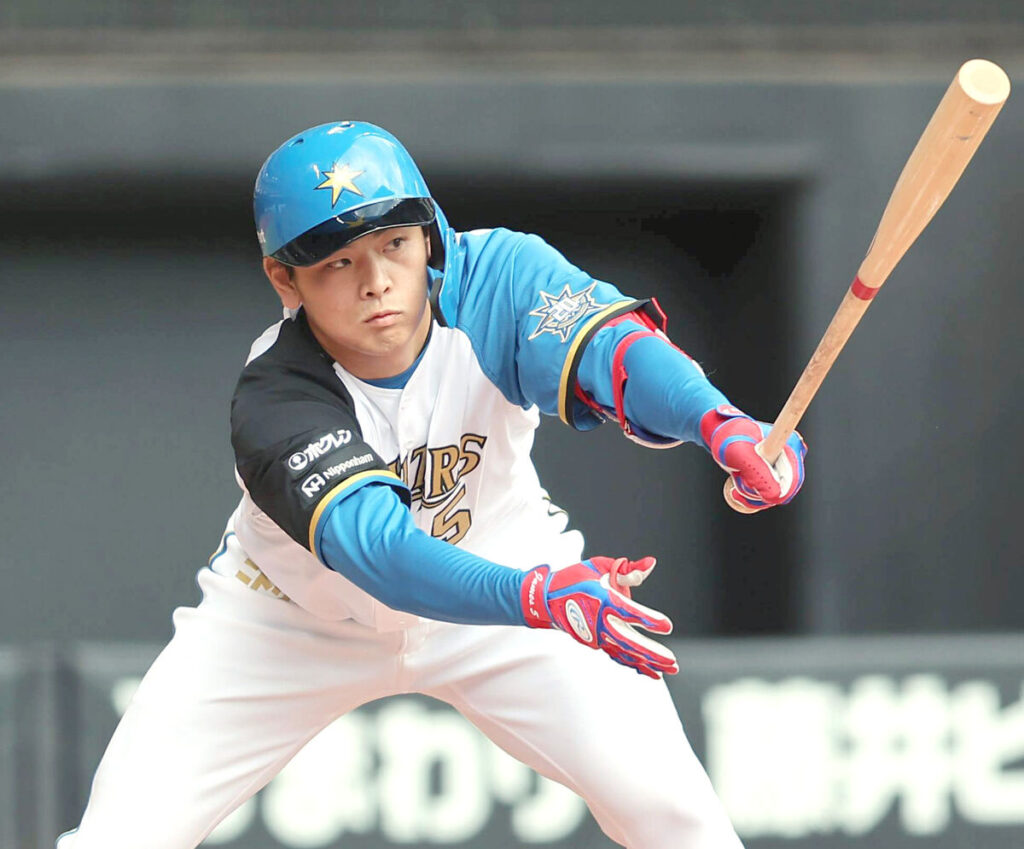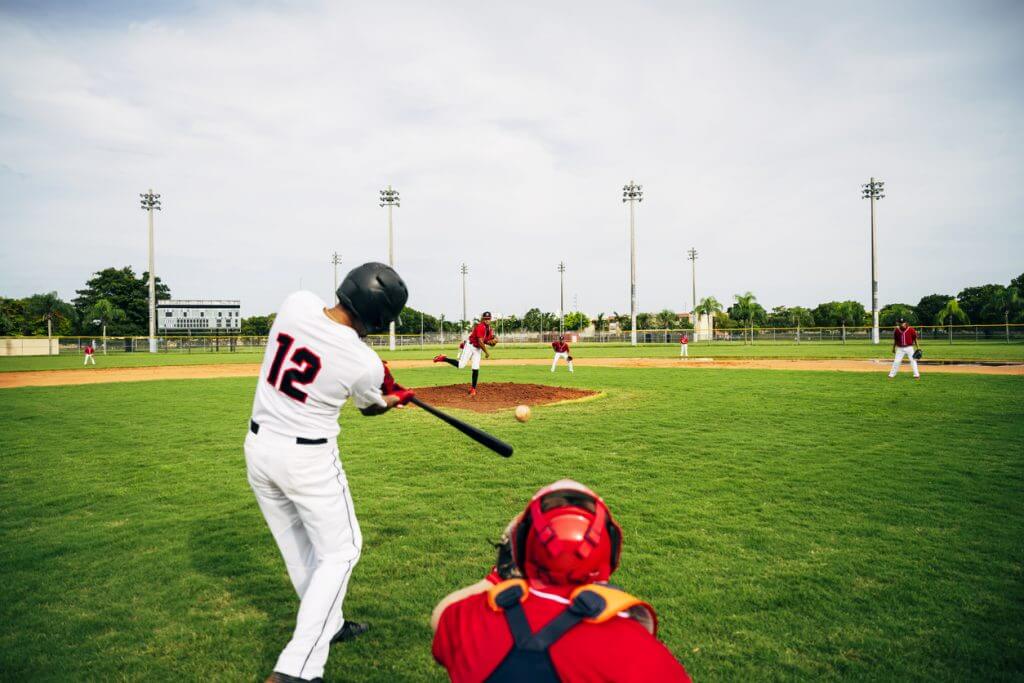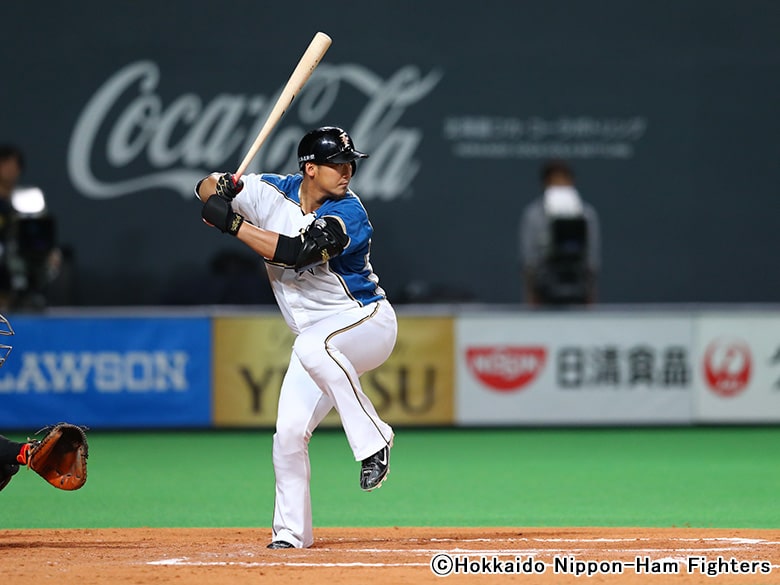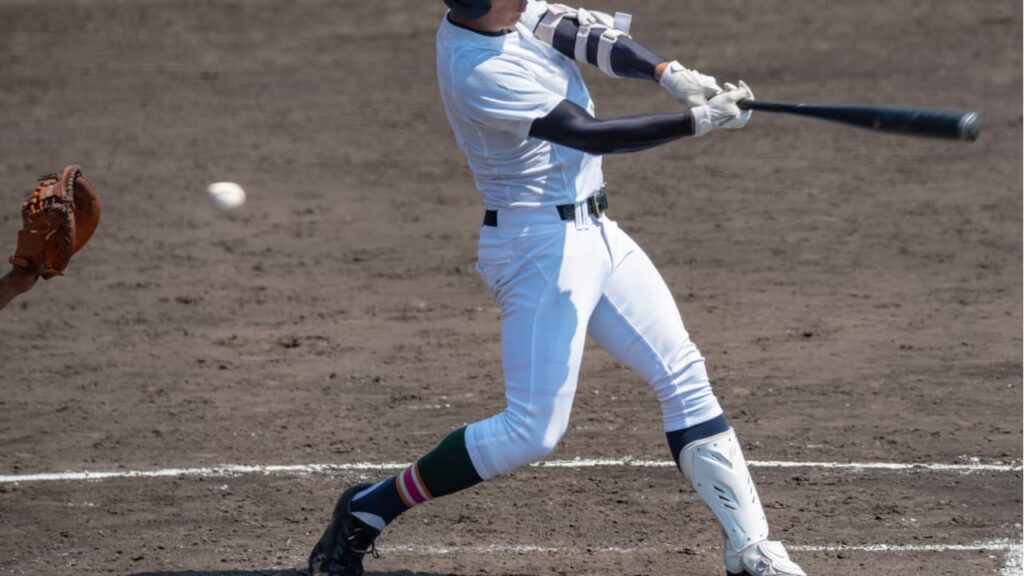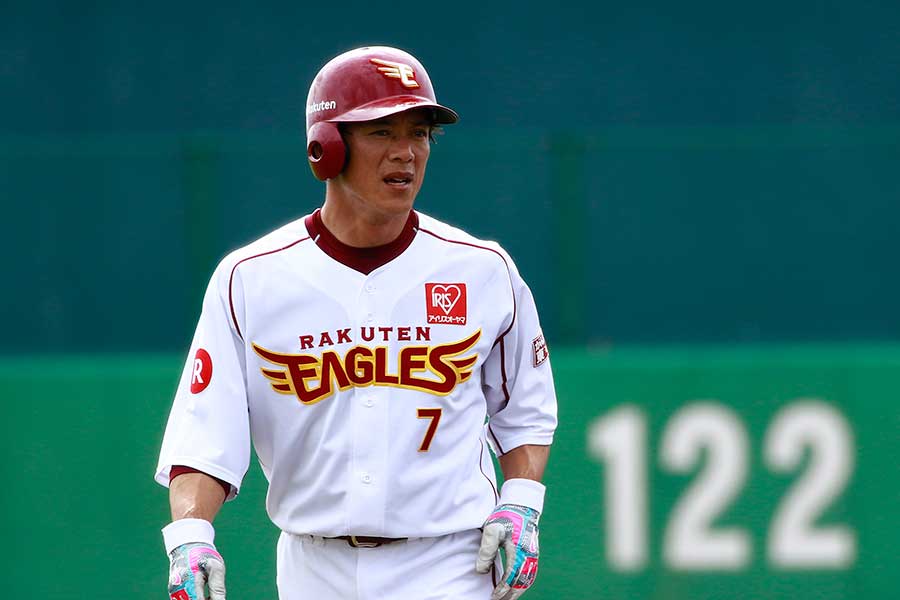
In baseball, the shortstop is one of the most important positions.
The shortstop is located in the center of the infield and is a position that requires a wide defensive range and strong defensive ability.
This article provides a detailed explanation of the shortstop’s basic position, defensive range, role and responsibilities, and required skills and characteristics.
It also covers shortstop training methods and tactics, the playing styles of famous shortstops, and future prospects.
Whether you’re a beginner or an advanced player, this guide will help you expand your knowledge of baseball shortstops.
Let’s start by looking at the basic position and defensive range of the shortstop.
目次
- 1 Basic position and defensive range of shortstop
- 2 Shortstop Roles and Responsibilities
- 3 Required skills and characteristics for shortstops
- 4 Short training methods and practice menus
- 5 Shortstop Tactics and Strategies
- 6 Famous shortstops and their playing styles
- 7 Future outlook for shortstop and expectations for the next generation
Basic position and defensive range of shortstop
The shortstop is a baseball position located near the center of the infield and plays a very important role as the core of the infield defense.
Here, we will explain in detail the specific position of the shortstop and its importance, as well as the width of his defensive range and the area he covers.
The position of the shortstop and its importance
The basic position of the shortstop is between second base and third base, slightly closer to second base.
This position is close to the center of the infield and is very important in balancing the entire infield defense.
The shortstop plays a key role in the defense as he has a wide range of responsibilities, including fielding batted balls, covering bases, and participating in teamwork plays.
-
The Core of Double Plays: The shortstop plays a central role in making double plays happen. He is required to throw the ball from second base to first base or third base quickly and accurately, which can greatly affect the flow of the game.
-
Defensive command: The shortstop is also the leader who commands the movements of the entire infield defense. It is especially important for him to give accurate instructions while coordinating with the other infielders and the pitcher when handling bunts or making rundown plays.
-
Preventing stolen bases: The shortstop often has to cover second base and also receives the ball from the catcher to get the runner out. For this reason, quick reactions and accurate catching and tagging techniques are required.
Defensive range and coverage area
The shortstop has a very wide defensive range, covering a wide area from second base to third base.
To cover such a large defensive area, excellent athleticism and quick reactions are required.
-
Horizontal defensive range: The shortstop covers a wide horizontal defensive range, extending to the right toward first base and to the left toward third base. For this reason, reaction speed to ground balls, liners, and fly balls is extremely important. In particular, the ability to react quickly to hard hit balls and move to the appropriate position is required.
-
Vertical defensive range: The shortstop covers the vertical defensive range from deep to shallow infield positions. Throwing from deep positions requires a strong arm and accurate throwing technique. Another important role is to move forward to handle ground balls and bunts.
-
Teamwork: The shortstop is also responsible for many teamwork plays with the other infielders and outfielders. It is especially important to coordinate with the center fielder and second baseman in areas where their defensive ranges overlap. This allows the shortstop to minimize gaps in the defense and ensure outs.
Understanding the shortstop’s location and defensive range makes the importance of this position even clearer.
The shortstop is the key player in infield defense and plays many roles, greatly influencing the team’s defensive strength.
A player with excellent defensive skills and athletic ability can contribute to the team’s victory by playing in this position.
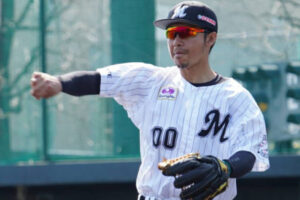
Shortstop Roles and Responsibilities
The shortstop is the central position in the infield and his role and responsibilities are extremely important.
He has the most defensive opportunities among the infielders and is the key to the team’s defensive strength.
Here we will take a closer look at the shortstop’s role as the center of the infield and his responsibilities as the key player in the team’s defense.
Role as the center of the infield
The shortstop plays a central role in the infield defense.
These roles are crucial as they greatly influence the flow of the game.
-
The Core of Double Plays: The shortstop plays a central role in making double plays happen. By covering second base and throwing the ball to first base or to third base quickly and accurately, the shortstop can reduce the opponent’s chances of scoring. Especially when there is a runner on first base, the shortstop’s quick play can determine the flow of the game.
-
Wide defensive range: The shortstop is located in the center of the infield and covers a wide defensive range. This refers to the defensive range for ground balls and fly balls between second and third base. Quick reactions to batted balls and accurate fielding are required.
-
Key to relay plays: The shortstop is also responsible for relaying the ball from the outfield to the infield. This allows him to receive a strong throw from the outfield and quickly return the ball to the infield to prevent the runner from advancing. The accuracy of this relay play is the deciding factor in whether or not the runner is put out.
Responsibility as the core of the team’s defense
The shortstop is responsible for leading the team’s entire defense and bears extremely important responsibilities.
These responsibilities are essential to improving the team’s overall defensive performance.
-
Defensive command: The shortstop is the infield commander, and instructs the other infielders on their defensive positions and movements. In particular, when handling bunts or making rundown plays, the shortstop must strengthen cooperation with the other players and give accurate instructions. This will ensure smooth defensive cooperation and increase the chances of scoring an out.
-
Preventing stolen bases: The shortstop also plays an important role in preventing stolen bases. He needs quick reactions, accurate catching and tagging skills to receive the throw from the catcher and get the runner out at second base. Successful execution of this play can shut down the opposing team’s attack.
-
Mental support: The shortstop also plays the role of the mental support of the team. Located in the center of the infield, he raises the morale of the entire team by making calm decisions and playing under a lot of pressure. In particular, the presence of a reliable shortstop is a great source of security for young players and players with little experience.
-
Changing the flow of the game: Shortstops often have the opportunity to play defense in important situations, so their plays can change the flow of the game. For example, the play of a shortstop can determine the outcome of a game, such as handling a difficult batted ball with runners in scoring position or turning in a double play.
The role and responsibilities of the shortstop are extremely diverse, and he is extremely important as a key player in infield defense.
Having a shortstop with advanced defensive skills and quick decision-making abilities can greatly improve a team’s defensive ability and give the team an advantage in the game.
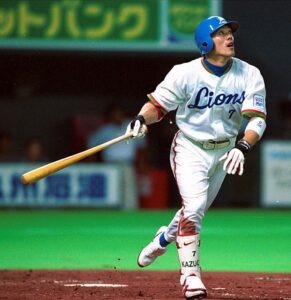
Required skills and characteristics for shortstops
The shortstop is a key infield defensive position in baseball, requiring many advanced skills and characteristics.
Here we will explain in detail the defensive ability and reaction speed, throwing technique and accuracy, fielding and catching required of a shortstop.
Defense and reaction speed
One of the most important skills for a shortstop is defense, which is essential to cover a wide defensive range.
The shortstop must cover the wide area between third and second base and react quickly to batted balls.
Strong defensive ability is directly linked to accurate fielding for ground balls, liners, and fly balls.
Reaction speed is also very important. A shortstop must make the right decisions and get into position quickly when the ball is coming towards them.
In particular, when a ball is hit hard or bounces irregularly, the ability to react instantly and move to the appropriate position is required.
This will ensure you get an out.
Throwing Technique and Accuracy
Throwing technique is an essential skill for a shortstop.
To cover a large area of the infield and make accurate throws to distant first and second bases, you need strong shoulders and precise throwing technique.
The shortstop’s throwing is an important tool for getting outs.
-
Long throwing ability: Shortstops often have to throw the ball from a deep position near third base to first base, so they need a strong arm to react quickly to grounders and line drives and throw the ball accurately to the far base.
-
Throwing accuracy: For shortstops, throwing accuracy is also very important. In particular, if the throw to second base or first base is off, the opportunity to get an out will be missed. In order to acquire accurate throwing techniques, it is necessary to check your form and release point in daily practice and improve your accuracy.
Fielding and Catching
Fielding and catching are basic skills for a shortstop, but they are extremely important.
The shortstop needs to be able to handle a variety of batted balls, including ground balls, fly balls, and liners.
Fielding technique is essential to ensure these batted balls are handled reliably.
-
Handling ground balls: Shortstops are especially required to handle ground balls. They need to be able to accurately position themselves to catch the ball, and keep their glove low to catch it reliably. This allows them to quickly stand up and throw.
-
Catching fly balls: Shortstops are required to react quickly to infield fly balls and make sure they catch them. It is important to hone the technique of catching high hit balls while running backwards. They also need to move forward to catch shallow fly balls and prevent runners from advancing.
-
Liner catchers: Quick reactions and accurate catching are required for liners. Practice moving reflexively and catching the ball in the center of your glove.
By comprehensively improving these skills and characteristics required of a shortstop, he will be able to play a key role in the infield defense.
Having a shortstop with advanced skills and judgment can greatly improve a team’s defensive ability and give them the advantage in the game.

The shortstop position requires strong defensive ability and quick reactions.
Proper training methods and practice menus are important to improve these skills.
Here we’ll go into detail about basic defensive drills and fielding, throwing and catching drills, and training to improve reaction speed.
Basic defensive drills and fielding
Basic defensive training for shortstop focuses on handling ground balls, fly balls, and liners.
Through these drills, you will develop your reaction time to batted balls and accurate fielding techniques.
-
Ground Ball Handling: When catching a ground ball, face the ball with good posture and keep your glove low to catch it. This will ensure good fielding. Also practice rising quickly to prepare for the throw.
-
Catching fly balls: Proper positioning and timing are important for catching fly balls. For high hit balls, get into position early to ensure the ball lands. We also practice catching at the fence and diving.
-
Liner catchers: Quick reactions and accurate catching are required for liners. Practice moving reflexively and catching the ball in the center of your glove.
Throwing and catching practice
Throwing and catching are essential skills for a shortstop.
Through these drills, you will develop accurate, powerful throwing and reliable catching.
-
Throwing practice: In throwing practice, we practice long-distance throwing, making use of our strong arms. In particular, we repeatedly throw long distances from third base to first base, improving our shoulder strength and throwing form. We also practice throwing from various distances and angles to improve our ability to throw quickly and accurately.
-
Catching practice: Practice to reliably catch ground balls, fly balls, and liners. We place special emphasis on practicing to handle difficult hit balls, so that you can respond to various situations. We also practice quick throwing movements after catching the ball.
-
Tag play practice: Practice quickly tagging runners who are trying to steal or advance. This practice improves the technique of accurately catching the ball thrown by the catcher and quickly making the tag.
Training to improve reaction speed
Training to improve reaction time is very important to Short.
Developing the ability to react quickly to batted balls during a game can greatly improve your defensive ability.
-
Reaction practice: Practice reacting instantly to and catching balls hit randomly by the coach or machine. This will help you develop reaction speed in a situation close to a real game.
-
Speed training: Short sprints and ladder training will improve your explosive power and foot speed, which will improve your initial reaction time to the ball.
-
Visual training: By training your eye movements, you can improve your ability to instantly grasp the trajectory of the ball. By incorporating visual training to follow the ball, you can improve your reaction time.
By incorporating these training methods and practice menus, you can improve your overall defensive ability as a shortstop.
By continuing to do the right training, you will be able to maximize your performance in matches and contribute to your team.
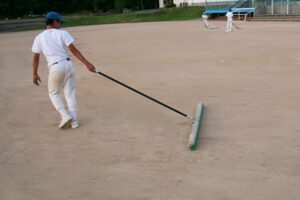
Shortstop Tactics and Strategies
As the key defensive player, the shortstop uses a variety of tactics and strategies to contribute to the team’s victory.
Here we will explain in detail how to take defensive positions and how to move, double play tactics and practice, defensive shifts and how to utilize them.
Defensive positioning and movement
The shortstop’s defensive position is adjusted according to the opposing batter’s batting tendencies and the pitcher’s pitching style.
By taking the proper defensive position, you can make the most of your defensive range and respond quickly to batted balls.
-
Analyze the batter’s tendencies: Analyze the batter’s past hit data to predict the direction and speed of the ball. For example, it is common for pull hitters to position themselves closer to third base, and for batters who hit in the opposite direction to position themselves closer to second base.
-
Positioning according to pitching style: The defensive position is adjusted according to the pitcher’s pitching style and type of ball. For example, in the case of a fastball pitcher, the batter is more likely to pull the ball, so the batter will position himself accordingly.
-
Flexible movement: When a ball comes flying, it is necessary to react quickly and move in the appropriate direction. In particular, since shortstops cover a wide area, it is important to move forward and backward in addition to moving left and right. This allows them to respond quickly to grounders, liners, and fly balls.
Double play tactics and practice
Double plays are one of the shortstop’s most important roles and can dramatically change the course of a game.
There are several tactics and practices that can be used to make a double play successful.
-
Mastering the basic movements: The first step is to master the basic movements of a double play. Repeatedly practice the movement of stepping on second base and quickly throwing the ball to first base. This requires smooth catch and throw techniques.
-
Cooperation with the second baseman: Cooperation with the second baseman is essential to making a double play successful. After a force out at second base, in order to quickly throw the ball to first base, it is necessary to receive the throw from the second baseman accurately. We place emphasis on communication and strengthen cooperative play.
-
Situational judgement: It is also important to judge whether to attempt a double play. Depending on the speed of the runner, the strength of the hit ball, and the situation of the game, you must instantly decide whether to get the out for sure or to aim for a double play. Calm judgment is required during the game.
Defensive shifts and how to use them
A defensive shift is a tactic in which a player changes his defensive position depending on the opposing batter’s batting tendencies.
Shorts will also play a key role as part of this shift.
-
Analysis of batting tendency: Analyze the batting tendency of the opposing batter from data and create the optimal defensive shift. For example, it is common to shift closer to third base against a left-handed pull hitter, and closer to second base against a right-handed pull hitter.
-
Flexible Positioning: Defensive shifts change frequently during a game, so the shortstop must be flexible with his position. He will quickly adjust his position based on instructions from the coach and catcher.
-
Shift practice: When practicing a shift, it is important to cooperate with other infielders and outfielders. In particular, communicate closely with the second and third basemen to cover the defensive range. If the ball comes flying as predicted due to the shift, prepare to respond quickly.
By utilizing shortstop tactics and strategies, you can greatly improve your team’s defensive strength.
By learning how to take proper defensive positions, practicing double plays, and strengthening teamwork during defensive shifts, you will be able to maximize your performance in games and contribute to your team.

Famous shortstops and their playing styles
There have been many great shortstops in baseball history, whose playing styles have been celebrated throughout the ages.
Here we will take a closer look at some of the great short players of the past and the top short players of today.
Greatest short players of all time
-
Cal Ripken Jr. Cal Ripken Jr. is considered one of the greatest shortstops in major league history. His style of play was characterized by solid defense and powerful hitting. Ripken holds an incredible record of 2,632 consecutive games played and is remembered for his durability and professionalism. He was a two-time MVP and an All-Star in 19 consecutive seasons.
-
Ozzie Smith Ozzie Smith, nicknamed “The Wizard,” is a defensive virtuoso. His playing style is characterized by his excellent fielding skills and agility. Smith won 13 Gold Glove Awards and produced many highlight plays with his brilliant defense. In particular, his quick movements and accurate throwing were highly praised by fans and teammates.
-
Derek JeterDerek Jeter was the captain of the New York Yankees for many years. His playing style is characterized by a well-balanced performance on both offense and defense. Jeter contributed to five World Series victories and was selected as an All-Star 14 times. He was especially highly regarded as a clutch hitter and was a player who often performed well in important situations.
Introducing the top shortstop players of today
-
Francisco Lindor Francisco Lindor is considered one of the best shortstops in modern major league baseball. His playing style is characterized by his high offensive and defensive abilities and charisma. Lindor has won the Gold Glove Award multiple times and his defense is among the best in the league. He is also known as a powerful hitter and plays a central role in the team.
-
Corey SeagerCorey Seager is a shortstop who plays for the Los Angeles Dodgers. His playing style is characterized by powerful hitting and solid defense. Seager has won the World Series MVP award and is recognized for his clutch hitting ability. His wide defensive range and accurate throwing are also his major strengths.
-
Trae Turner is a shortstop who plays for the Washington Nationals. His playing style is characterized by overwhelming speed and flexible defensive ability. Turner has won the stolen base title multiple times, and his wide defensive range, which makes the most of his speed, is a major attraction. He also boasts a high batting average and is active as the team’s leadoff man.
These great players have helped evolve the role of the shortstop and increase its importance in each era.
By learning about their playing styles and achievements, we can rediscover the appeal and potential of the shortstop position.
Understanding the characteristics of each player and incorporating them into your own play will be a step towards further growth.

Future outlook for shortstop and expectations for the next generation
The role of the shortstop has changed as baseball has evolved.
The short positions of the future will require even greater skill and adaptability.
Here we take a closer look at the future role and prospects of the shortstop, and what is expected of the next generation of shortstop players.
Short’s future role and prospects
The shortstop will continue to serve as the focal point of the infield.
However, with the evolution of modern baseball tactics and data analysis, their role is expected to become even more diverse and complex.
-
Further evolution of defensive shifts: With the evolution of data analysis, detailed analysis of the opposing batter’s hitting tendency and defensive shifts based on that will become increasingly important. Shortstops will need flexible positioning and quick reactions to deal with this. The key to practicing defensive shifts is a wide defensive range and accurate positioning.
-
Success on both offense and defense: In modern baseball, there are more and more shortstops who are required to have not only defensive ability but also hitting ability. In the future, players who can perform well on both offense and defense will be valued. In particular, a shortstop with hitting ability not only improves the team’s scoring ability, but also puts pressure on the opposing pitcher.
-
Improved versatility: Shortstops will be expected to be more versatile. They will not only play defense, but will also handle bunts, play in relays, cover the bases, and perform a variety of other roles. This will reward players who can adapt to a variety of situations during a game.
What is required of the next generation of short players?
The next generation of shortstops will need new skill sets and attributes to adapt to the modern game of baseball.
By acquiring these skills, you can expect to be successful in short positions.
-
Advanced defensive skills: In addition to basic fielding and throwing techniques, players are required to have a wide defensive range and quick reaction times. In addition, advanced defensive skills such as handling double plays and covering the bases are required. Continuous practice and practical experience are essential to acquire these skills.
-
Data literacy: In modern baseball, where data analysis plays an important role, the ability to understand and use data is required. You need the ability to analyze the tendencies of opposing batters and your own performance using data and reflect that in your tactics. By making full use of data, you can maximize the effectiveness of defensive shifts and batting strategies.
-
Mental strength: A strong mentality is necessary to overcome the tension and pressure during a match. The next generation of short players will need to have calm judgment and high concentration. Psychological training and mental coaching are effective in cultivating these skills.
-
Physical training: The shortstop position requires quick movement and endurance. It is important to strengthen your physical condition through strength training and speed training. It is especially important to build up your stamina to fight through a long season.
The next generation of shortstops will need to develop a balanced set of these skills and attributes to succeed in the modern game of baseball.
By deepening his skills and knowledge and gaining practical experience, it is expected that he will grow into a player who will lead the shortstop position in the future.

